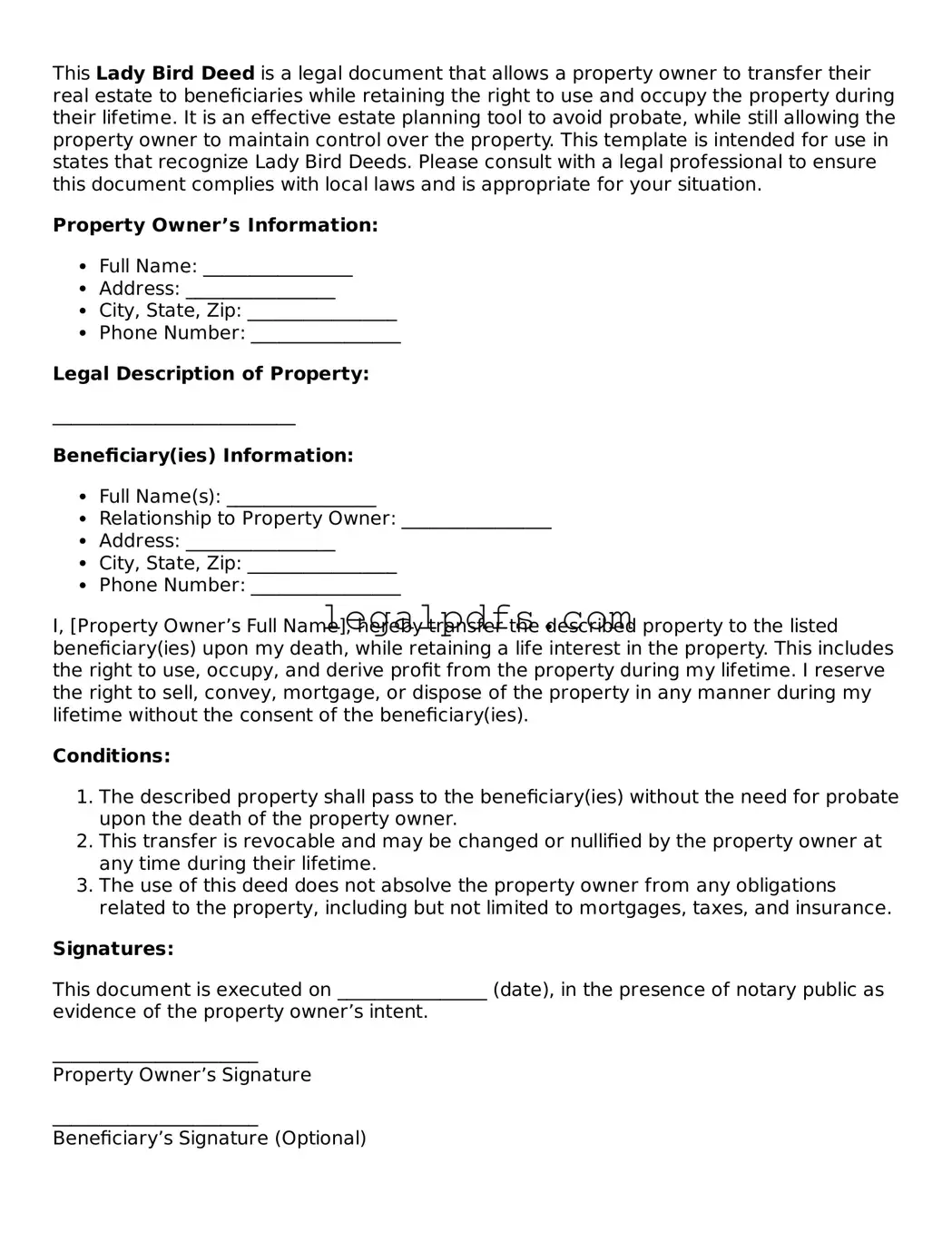What is a Lady Bird Deed?
A Lady Bird Deed, also known as an Enhanced Life Estate Deed, is a legal document that allows property owners to retain control over their property during their lifetime, including the right to sell or mortgage, and upon their death, the property automatically transfers to a designated beneficiary without the need for probate. This type of deed is recognized in a few states, including Florida and Texas, and offers a simple, cost-effective way to transition property.
How does a Lady Bird Deed differ from a traditional life estate deed?
Unlike traditional life estate deeds, where the life tenant's rights to manage or sell the property are significantly restricted, a Lady Bird Deed provides the property owner (life tenant) with enhanced powers, including the ability to sell, lease, or mortgage the property without the beneficiary's consent. This flexibility is what distinguishes the Lady Bird Deed from more conventional forms of life estate deeds, offering a unique blend of control and posthumous benefit.
Why might someone use a Lady Bird Deed?
Individuals may choose a Lady Bird Deed for several reasons. Primarily, it allows for the avoidance of probate concerning the property, ensuring a smoother and faster transfer of assets to the designated beneficiary upon the owner's death. Additionally, it can be a strategic part of Medicaid planning, as the property transfer under this deed may not be subject to Medicaid estate recovery. It also allows the property owner to retain complete control over the property, with the flexibility to change beneficiaries or sell the property at any time.
What are the potential drawbacks of a Lady Bird Deed?
While beneficial, Lady Bird Deeds are not without potential drawbacks. Their recognition is limited to a handful of states, which may complicate interstate property planning. Also, because it's a relatively uncommon instrument, some institutions might be unfamiliar with it, potentially complicating transactions involving the property. Additionally, there might be complications in scenarios where the property owner incurs debts or liabilities, as creditors might target the property.
Can a Lady Bird Deed be revoked or amended?
Yes, one of the compelling advantages of a Lady Bird Deed is that the property owner retains the right to revoke or amend the deed at any time during their lifetime. This includes changing the designated beneficiary, selling the property, or completely revoking the deed. This level of control ensures that the property owner can adapt their estate plan to changing circumstances or relationships.
How is property transferred to the beneficiary upon the death of the property owner?
Upon the death of the property owner, the property automatically transfers to the designated beneficiary without the need for probate proceedings. This is because the deed sets out a clear line of succession, and the property is considered to have passed outside of the estate. To formalize the transfer, the beneficiary would typically file a death certificate and possibly a simple legal document, depending on local requirements, with the local county recorder’s office.
Is a Lady Bird Deed right for everyone?
Whether a Lady Bird Deed is the right estate planning tool depends on individual circumstances, including the property owner’s estate planning goals, the property location, and the specific needs of the beneficiaries. It's crucial for property owners to consult with estate planning or real estate professionals familiar with the use of Lady Bird Deeds in their state to assess whether it aligns with their estate planning strategy and provides the desired flexibility and benefits.
